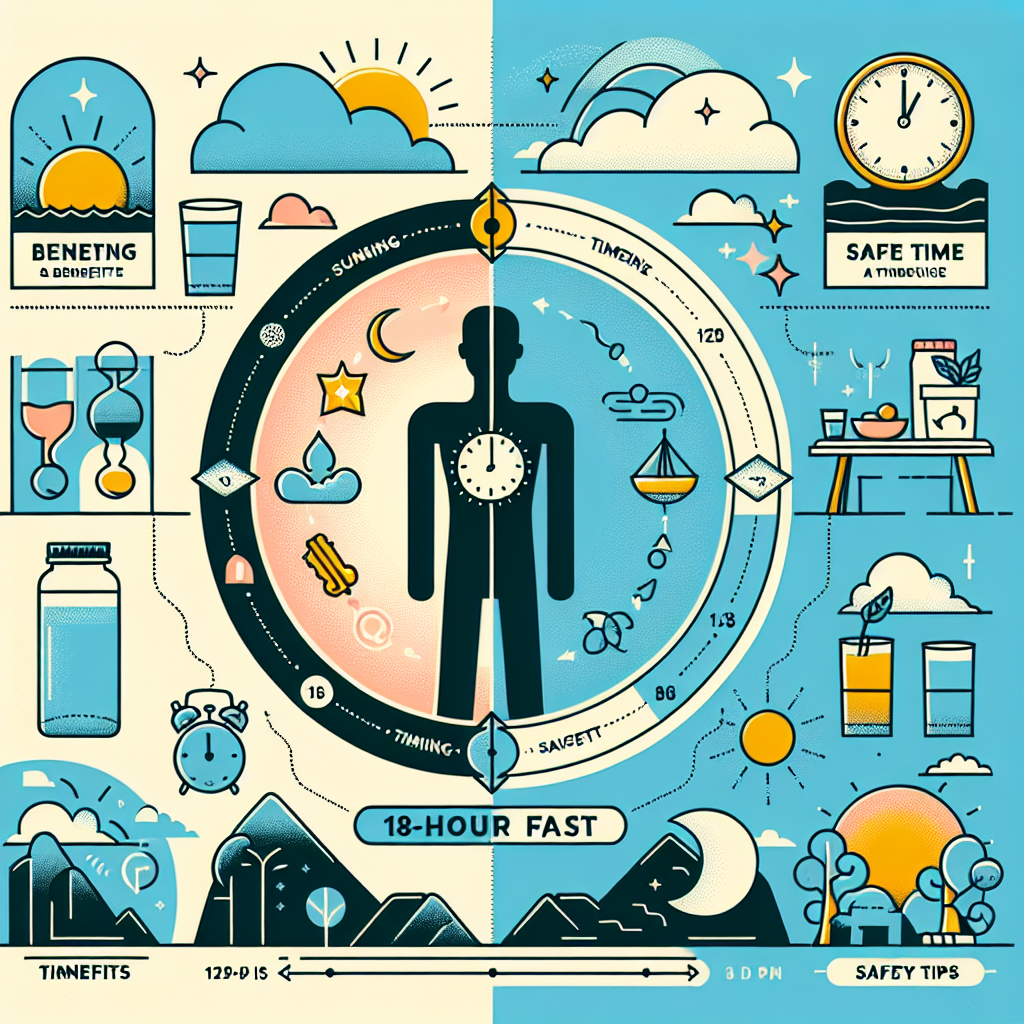Many people experiment with time-restricted eating to manage weight and boost metabolic health. One popular pattern is the 18 hour fast, where you compress your eating window and give your body an extended period without calories. This article explains benefits, a sample timeline, safety tips, and how to decide if this pattern fits your lifestyle and goals.
Fasting 18 hours a day: what to expect
An 18-hour fast typically means eating during a 6-hour window and abstaining from caloric intake the other 18 hours. During the first day you may notice hunger, mild headaches, or changes in energy as your body shifts from using recent meals for fuel to mobilizing stored glycogen and fat. Over a few days to weeks, many report stabilized appetite, clearer thinking during fasting windows, and easier calorie control.
Timeline of physiological changes
Here’s a general timeline of what happens when you practice this pattern regularly:
- 0–12 hours: Your body uses glucose from recent meals; insulin levels decline.
- 12–24 hours: Glycogen stores deplete and lipolysis increases — fat becomes a larger fuel source.
- 24+ hours (occasional): Autophagy and cellular repair processes may be upregulated with longer fasts, though evidence varies by individual and context.
Benefits and practical advantages
Potential benefits reported in clinical and observational studies include improved insulin sensitivity, simpler calorie control, and adherence-friendly structure for some people. Intermittent patterns like an 18-hour fast can also help reduce late-night snacking and improve meal timing awareness. If you’re wondering what happens to your body when you fast, expect changes in energy source use (glucose to fat), shifts in hunger hormones, and possible improvements in metabolic markers when combined with healthy eating.
Who may benefit most
People who work well with a scheduled eating window, those aiming to reduce overall caloric intake, and individuals without medical contraindications may find an 18-hour fast practical. However, it’s not the best choice for everyone (pregnant or breastfeeding people, individuals with certain medical conditions, or those with a history of disordered eating should avoid restrictive fasts unless supervised).
How to structure a safe 18-hour fasting routine
Start gradually — if you currently eat across 14–16 hours, extend your fasting window by 30–60 minutes every few days until you reach 18 hours. Stay hydrated with water, herbal tea, or black coffee during the fast. Prioritize nutrient-dense meals during your eating window: lean protein, vegetables, healthy fats, and whole grains to maintain energy, satiety, and micronutrient intake.
For guidance on longer fasts and how to prepare safely if you ever consider extending beyond time-restricted eating, consult a reliable resource like a guide to the 96-hour fast: what to expect and how to do it safely, which explains precautions for extended fasting.
Common questions about duration and safety
Two practical scenarios to know about are fasting consistently over many weeks and occasional longer fasts. If you’re thinking about fasting 18 hours a day for a month, monitor your energy, mood, sleep, and any lab markers recommended by your clinician. While some adapt well and report improved markers, others may experience fatigue, disrupted sleep, or nutrient shortfalls if food choices are poor.
- Ease into the schedule to reduce side effects.
- Ensure meals are balanced to meet vitamin and mineral needs.
- Stop fasting and seek medical advice if you develop severe dizziness, fainting, or persistent weakness.
Nutritional and medical safety tips
Consult your healthcare provider before beginning, especially if you take medication (like insulin or blood pressure drugs), have diabetes, or other chronic conditions. If you’re taking medications that require food, timing adjustments or monitoring may be necessary. Pregnant or breastfeeding individuals should not undertake prolonged fasting patterns without medical supervision.
For general guidance on healthy eating patterns that support metabolic health while you experiment with timing, refer to reputable public health resources such as the World Health Organization’s guidance on healthy diets: WHO: Healthy diet fact sheet.
Quick tips to get started
- Pick a consistent 6-hour eating window that fits your schedule (e.g., noon–6 pm).
- Plan balanced meals and avoid bingeing during the window.
- Keep electrolytes and hydration steady; add salt to foods if you feel lightheaded.
- Track sleep, mood, and energy to judge whether it’s sustainable for you.
FAQ
Q: Is it healthy not to eat for a day?
A: Occasional 24-hour fasts can be safe for many adults, but safety depends on individual health. If you mean a single day without food, consult your clinician if you have medical conditions, take medications, or have a history of disordered eating.
Q: Will I lose muscle on an 18-hour fast?
A: With adequate protein intake and resistance exercise during your eating window, most people can preserve muscle while losing fat. The risk of muscle loss increases with chronic calorie deficit and poor protein intake.
Q: How long before I adapt to an 18-hour fast?
A: Adaptation varies; many people feel improved hunger control and stable energy within 1–3 weeks. If symptoms persist beyond that, reassess whether this pattern suits you.






